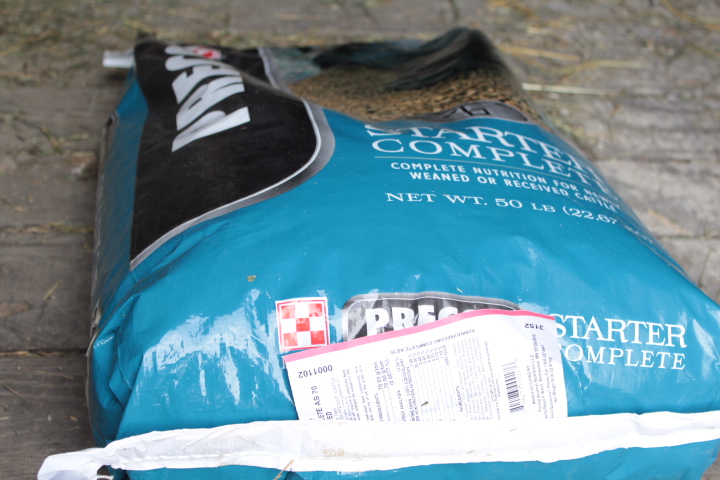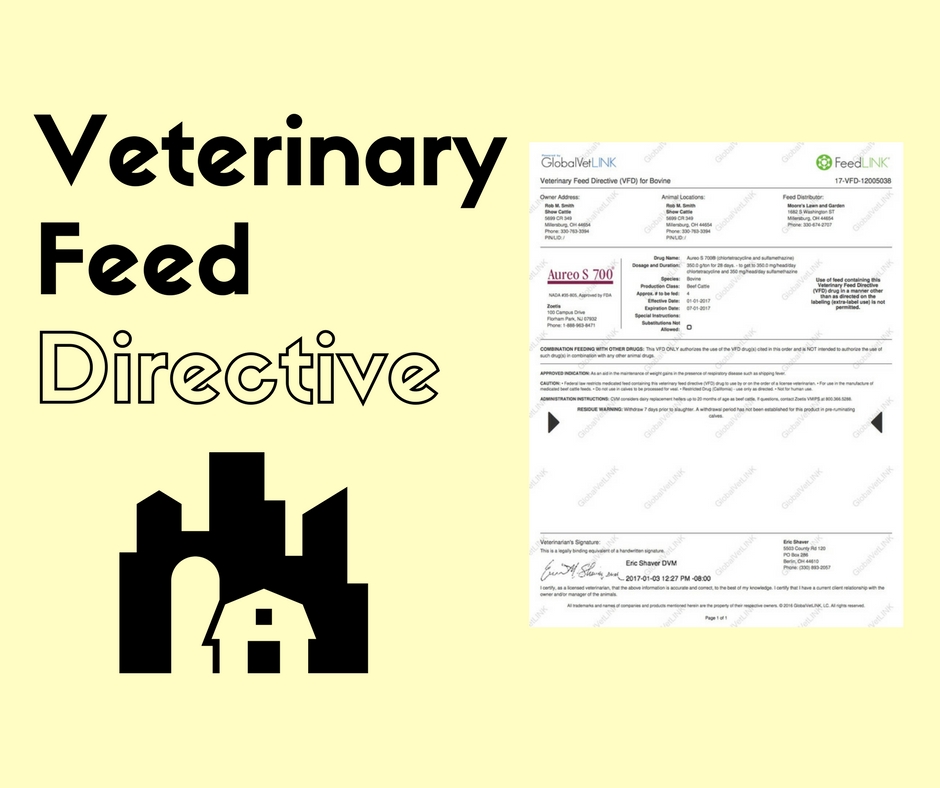
As of January 1, having a relationship with your local veterinarian is even more crucial due to the new rule put into action by the Food Drug Administration (FDA).
This new rule no longer allows animal producers to buy antibiotics over-the-counter that go in feed without a veterinarian’s consent, also known as a Vet Feed Directive (VFD). A Veterinary Feed Directive or VFD is a document signed by a veterinarian that permits the use of an approved VFD drug to be used in an animal feed. The use of antibiotics for growth promotion or feed efficiency is no longer permitted.
The FDA has created the VFD because of the issue of antibiotic resistance. This is directly associated and medically important for humans, as it is believed that overuse of antibiotics in animals could lead to difficulties in treating humans. Therefore, drugs that are important to the health of humans are listed under the VFD rule. A full list of these drugs is listed on the FDA’s website linked below.
We reached out to some of the vets we insure to get a more personal insight of the new directive. Dr. Kelly Liming, DVM of Rolling Hills Veterinary Service in Bethel, Ohio encourages people to establish a relationship with their local veterinary. He works closely with his clients in order for them to fully understand the purpose of the FDA’s new rule and how to properly use antibiotics.
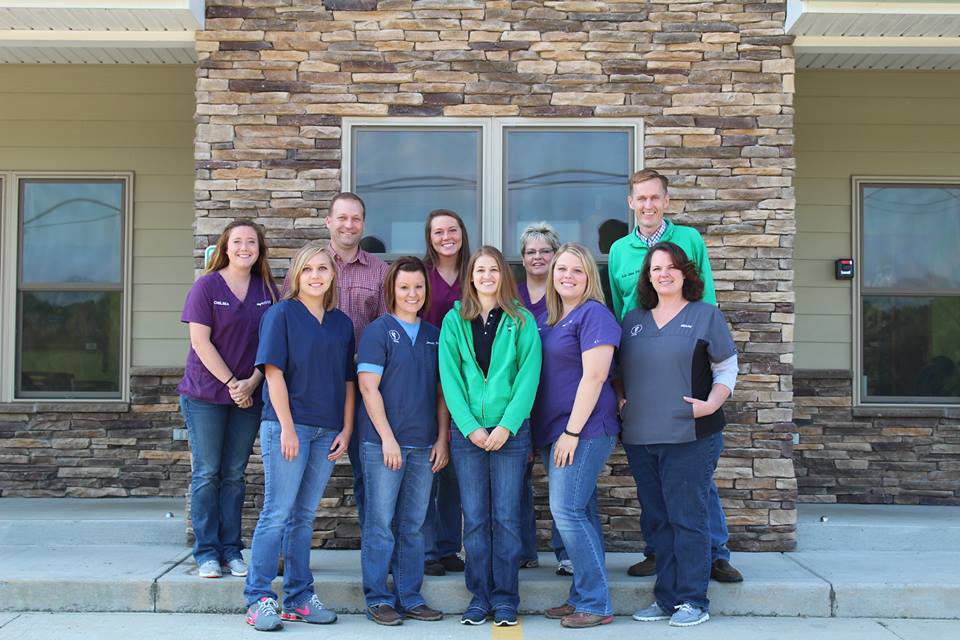
(Dr. Liming with the rest of the staff from Rolling Hills Veterinary Services)
“The ultimate goal of the FDA is to try to prevent antibiotic resistance of bacteria,” said Dr. Kelly Liming, DVM. “It prevents people from using (antibiotics) when it's not necessary and it will help direct people on the correct way to use antibiotics with feed.”
There are many components to the VFD which at times can seem overwhelming. But with the help of Dr. Kelly Liming, DVM and the FDA’s website, we have developed a few key take-aways to help ease the transition.
1. Establishing a relationship with a veterinarian is crucial to the success of the VFD.
Essentially the VFD is a permission slip from your vet which allows you to take the VFD to your feed supplier, which in return will give you the opportunity to purchase the feed with the medication included. To receive the VFD, you must first have your vet conduct a visit to inspect the animals in order to determine that an antibiotic or medicated feed is deemed necessary.
2. VFD has many components and should include the following information.
For a VFD to be considered lawful the following information must be included:
the veterinarian’s information, the client’s information, animals to be fed information, date of issuance, expiration date, name of drug, why the VFD was issued, withdrawal time, instructions, cautions and warnings, number of refills, statement of VFD and a signature of the veterinary either electronically or written. All components must be complete for the VFD to be considered lawful.
3. Records are important.
All three parties involved; the veterinary, feed supplier, and the animal producer, must keep records of the antibiotic being used for two years. This will mean that all three parties involved must keep accurate records and up-to-date information. At any time the FDA can request to see your VFD orders for inspection.
4. Education and Communication
Challenges facing the VFD is lack of communication and education. In order for the VFD rule to be successful, we must seek out the information. To find that information, visit the FDA’s website, your local feed representative, or visit your veterinarian.
“There is a lot of information out there if people are willing to read about and learn about it,” said Liming. “We all just need to wrap our minds around it.”
The VFD rule is here to stay and although it requires changes to be made to they way things were once done regarding medications in feed. Dr. Kathryn McCullough of Shawnee Animal Clinic truly believes that the VFD will create positive changes for the animal production side of things.
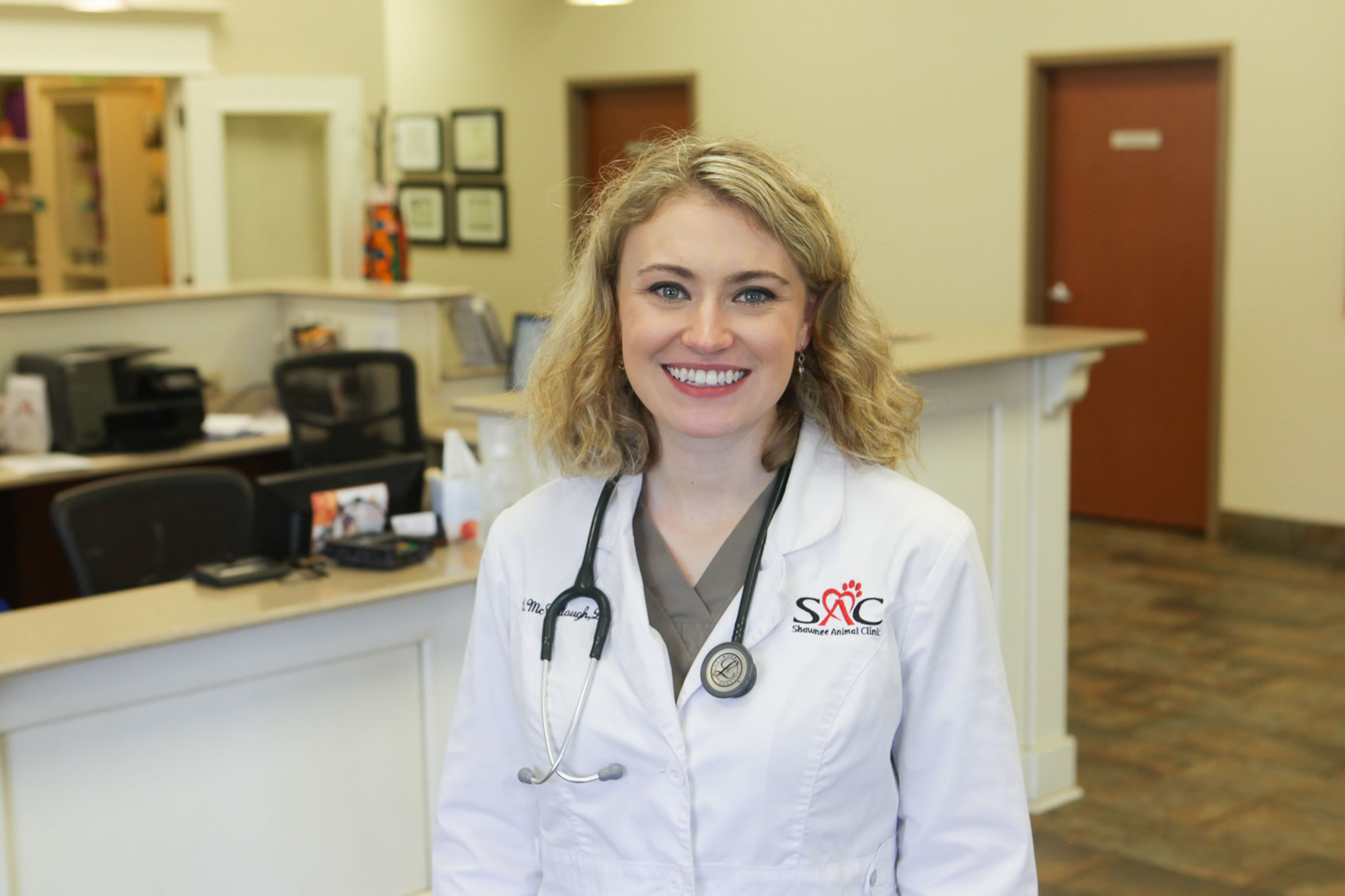
(Dr. Kathryn McCullough)
“Like any new policy, there will be a few bumps in the road, but overall this is a good program,” said Dr. McCullough. “It is getting veterinarians back out on the farm which allows for healthier animals and better food sources.”
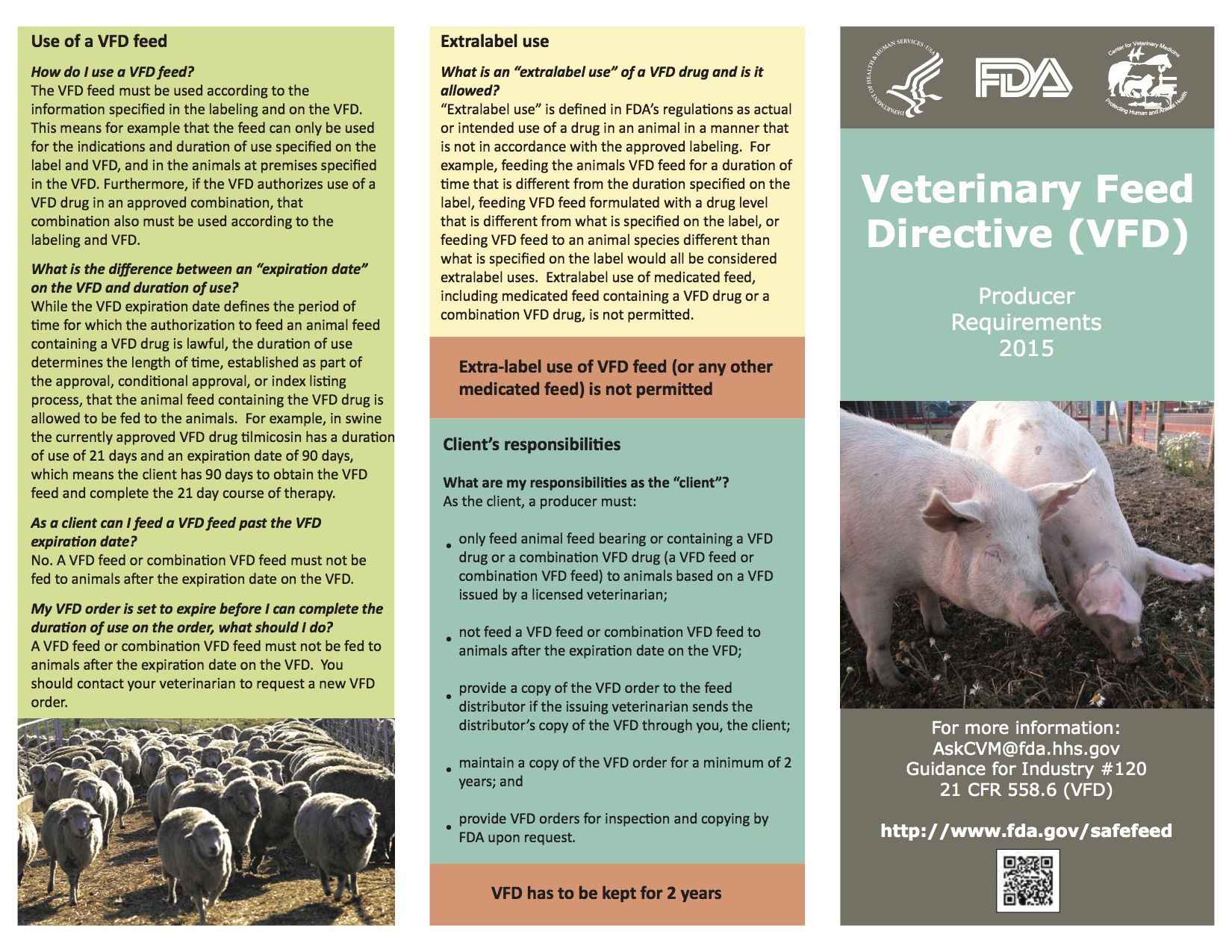
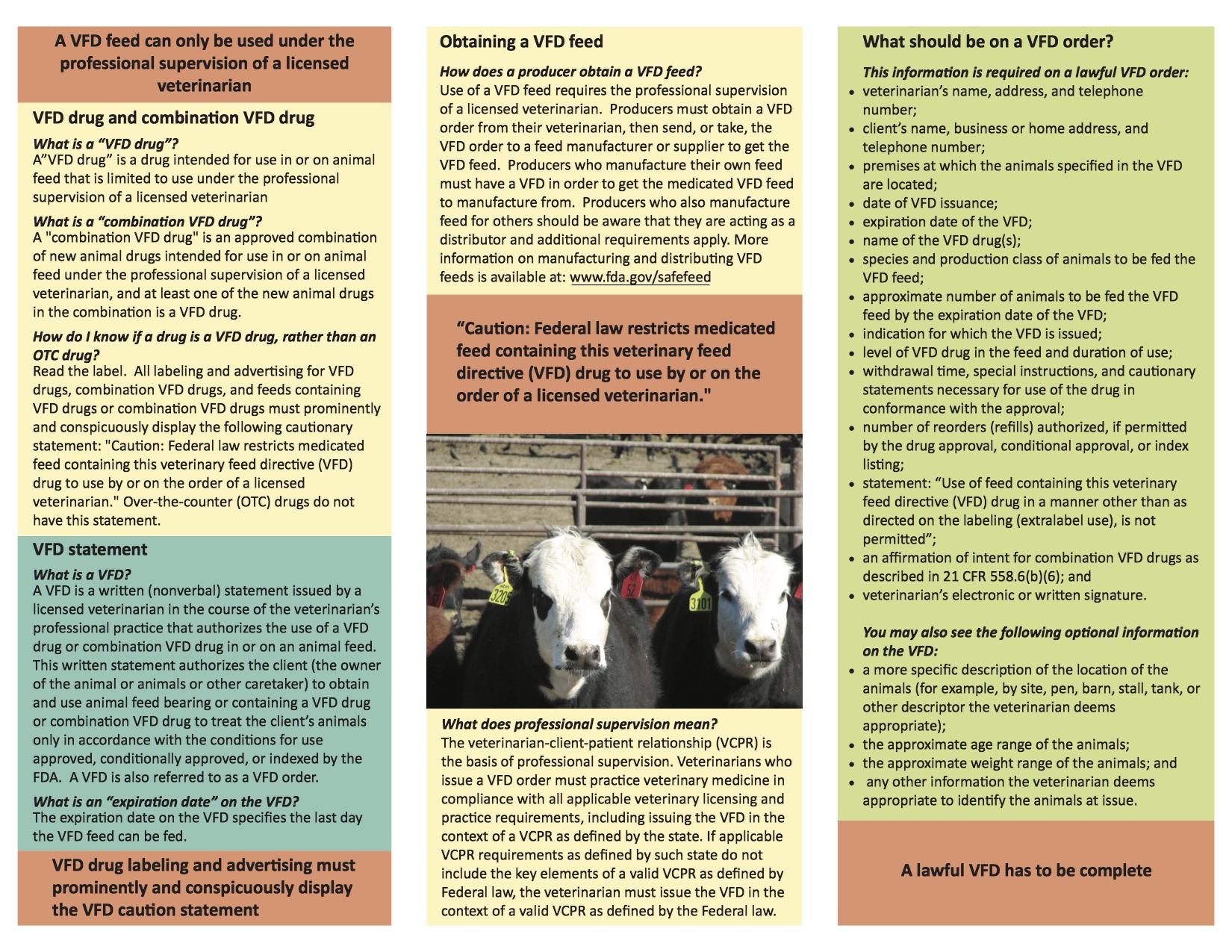
http://www.fda.gov/AnimalVeterinary/DevelopmentApprovalProcess/ucm449019.htm
